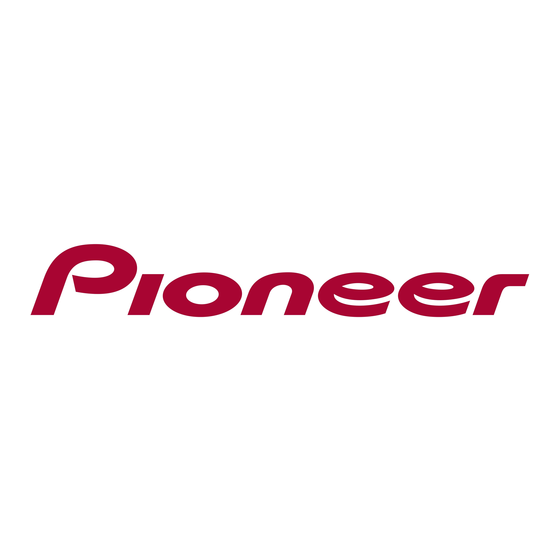- ページ 5
CDプレーヤー Pioneer PR-8210のPDF 取扱説明書をオンラインで閲覧またはダウンロードできます。Pioneer PR-8210 26 ページ。 Videodisc player
Pioneer PR-8210 にも: 取扱説明書 (26 ページ), 補足サービスマニュアル (6 ページ)

FEATURES
No contact pickup system
This system uses a low-powered laser to detect the
information recorded on the videodisc. There is no
physical
contact
between
the
pickup
and
the
videodisc
itself, so it is called the "no contact
pickup
system".
This
laser, while
in operation,
projects
a continuous
beam
of light onto
the
disc on
an
area
measuring
no more
than one
micron in diameter.
Information on the videodisc is stored in the form
of microscopic pits which are laid down in a spiral
track on a light reflected surface. When the laser
beam strikes a series of pits, it is reflected into the
system
and the variation of the reflected light is
converted into the reproduced signal.
Unlike
an ordinary phonograph
record or other
videodisc systems, there is no abrasion and no wear
on the disc.
The illustrations to the right show how the laser
beam
and disc interact in the Pioneer videodisc
player.
Both standard play (CAV) and extended
play (CLV) videodiscs can be played.
The PR-8210 automatically detects these
videodiscs and plays accordingly.
The standard play disc, also known as the CAV or
constant angular velocity disc, spins at the same
constant
speed
of 1,800 rpm
from
the inner
circumference
to the outer circumference,
and
provides
a maximum
of 30 minutes playing time
per side.
On the CAV disc, one video picture frame is record-
ed for each revolution, so a number of additional
performance features are possible.
Although the extended play disc, also known as the
CLV or constant linear velocity disc, does not offer
such additional features, it does have
a maximum
playing time of one hour per side since the rota-
tional speed continuously varies from 1,800 rpm at
the inner circumference to 600 rpm at the outer
circumference.
Laser tube
Tracking
/ |
mirror
Photo diode
Optical path of the videodisc player
Plastic
Aluminum `.
Plastic ^ 5
edel
ame T T
UT
lin
`
Objective lens
Magnified view of the pickup and videodisc
Microcomputer controlled operation to offer
many convenient features
A maximum
of 54,000 concentric tracks can be
contained
on one side of a videodisc. For CAV
discs,
one
revolution
(one track)
contains
one
frame of information, and each frame is numbered
from the innermost to the outer track. This num-
bering system is used to permit a variety of con-
venient special functions. For example, each frame
(track) can be repeated several times to permit
slow motion play, and frames can be skipped to
permit triple-speed play. The numbers can also be
used to automatically
locate a specific frame or
chapter of a program (random access).
It's all made
possible by the remarkable
laser
pickup system and a sophisticated microcomputer.
